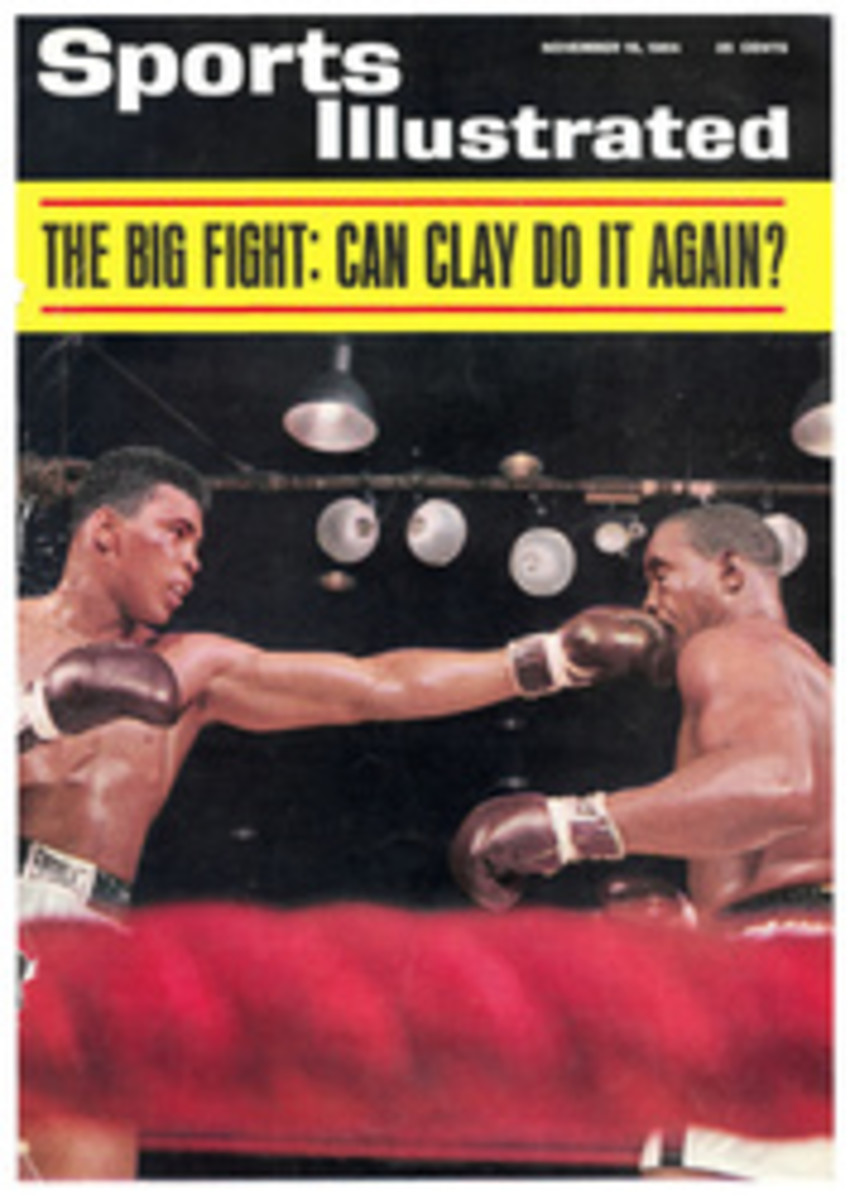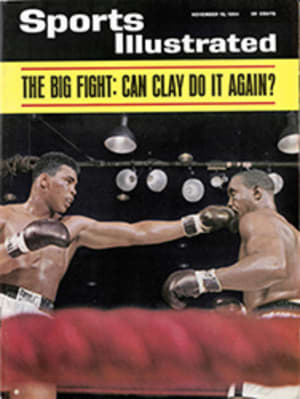
Desert full of motorboats
By now almost everyone must have seen the movie cartoon about the desert highway. The hero (Porky Pig? Bugs Bunny?) pulls up to a crossroads in an endless, empty expanse. He looks to the right, but there is no one in sight. He looks to the left. Nothing. So he cautiously steps on the gas to cross and, wham! he is promptly flattened by a car that zooms out of nowhere.
That's the way it was at Salton City, Calif. last week as this waste of wilderness suddenly exploded into a bedlam of Cadillacs, trailers, sightseers, motorcycles, motor scooters and weird desert-crossing contraptions known locally as "sand buggies."
Salton City isn't really a city at all, only a big bubble blown up by real-estate promoters on California Highway 86 alongside a sea that isn't a sea. It normally consists of a few houses, a church, a restaurant, half a golf course, two motels and a yacht club. But last week it was playing host for the fourth time to the annual Salton City 500 Marathon powerboat race, and 60,000 cars were jamming the highway to get to it.
Not yet given official recognition by any of the authorized powerboat racing associations, the Salton City 500, the only race of its kind, has nevertheless succeeded during the four short years of its existence in capturing the imagination of the nation's top racing drivers. Most of them have come to consider it the sport's major test of driving skill.
Some 189 boats, both inboard and outboard, were entered last week, and many had famous drivers. Among them were Pilot-Builder Rudy Ramos, Mickey Thompson of racing-car fame and Astronaut Gordon Cooper, who was driving a boat owned by the turf's Ogden (Dinny) Phipps. When asked how the National Aeronautics and Space Administration felt about one of its stars going into orbit on the water, Dinny answered: "They can't say much about it. He's on his vacation." "There's not much difference between a space capsule and a boat," said Cooper himself. "They both go fast."
The Salton Sea, on which Astronaut Cooper was testing his mettle last week, is actually an inland lake whose surface is some 234 feet below the level of the real sea, 100 miles to the west. Learning this fact, one eager newspaperwoman called up the Marathon's press-relations officer before the race began and asked, "Could you tell me more about this race that takes place underwater?"
But despite the fact that it seems less like a body of water than a damp patch in the desert, the "sea" is wide enough—34 by 15 miles—and deep enough—40 feet—to provide first-class competition for the racing addicts whose weakness lies in driving small—under 25 feet—boats across the water at speeds up to 80 miles per hour. From east, west and south, they drag their boats in along Route 86 behind sleek Cadillacs and Ford T-Birds to bivouac along the south shore of the sea in a kind of western Arab oasis of aluminum trailers. Many of them hail from other parts of California, but there are some from as far away as South Carolina and Florida. The principal attraction is an aggregate purse of about $25,000 to be split among the winning boats—or what is left of them—after the grueling run of 500 miles. The favored candidates to win these prizes were stenciled on T shirts almost everywhere you looked. Some urged on the Orange Crate, others plumped for Tiny Tim. Echoing the late political campaign, one set of T shirts blared "All the way with BSA." In this desert watering spot the T shirt with nothing written on it at all was as rare as a sea gull.
As a race, the 500 is the most orderly, punctual and best-organized motorboat event in the country. It has to be to cope with the avalanche of entries it attracts. Of the 180 or more who hope to capture a prize, more than 100 are sifted out in the qualifying heats on the first and second days of the racing over shorter courses. The marathon proper begins on Saturday at noon, continues for four hours and starts again on Sunday morning.
Early last Saturday morning, before the 500-mile run began, the once-deserted desert waterfront suddenly became a hiving shantytown of jerry-built racing pits. They were set up 100 feet or more off the beach on everything from derelict barges to spidery scaffolding, and all of them were groaning under the weight of gasoline transported by men—and a few women—who waded out from shore carrying cans of the fuel to feed the boats.
How the racers identified their own pits was one of the minor mysteries of the event, but during the race each one would come zigzagging in, narrowly missing the wading gas porters, lay his boat alongside a pit identified with colored balloons or some such signal, gas up and be off again in almost as brief a time as it might take an auto racer at Indianapolis.
The most efficient pit belonged to overall favorite Mike Wallace, a 23-year-old USC senior. His pit crew did not have to bother to lug their gas all the way out from shore. They had a pipe line and simply pumped it out. There were several other supposed favorites, but Mike's price in the Calcutta betting pool was what counted. He went for a cool $30 to win. Astronaut Cooper was being bid in at $12, and you could get Mickey Thompson for a mere 55¢.
Mike's special 17-foot Rayson Craft Tiny Tim was put together as if money were no object, as indeed it wasn't. Parts that would normally be constructed of baser metals were made of stainless steel, and every unit in the engine was X-rayed to guard against flaws. Mike had prepared himself for the grueling run by a stern regimen of weight lifting. He was the only driver who planned to go the whole 500-mile route without a relief driver.
"I'm going to go along at 5,000 revs in the middle of the afternoon," he said, "then press later in the day when the water smooths down." Just before the race began, Wallace bowed his head as he took the wheel of his gleaming white craft and, without affectation, prayed. But neither care nor planning nor prayer did any good. Before the four hours' racing of the first day was done, one of Wallace's split-proof stainless fittings had split and Mike was falling back fast. After two pit stops he was still among the leaders, but already 14 laps behind first-place Rudy Ramos from Gardena, who built' the boat Mike was driving and whose boats held seven of the first 10 places.
Sixty-six laps off the pace, Mickey Thompson was as good as out of it, but, with help from Co-driver Chuck Daigh, Gordon Cooper was hanging in strong only eight laps off the pace in fourth place as Saturday's run drew to a close. Then Chuck cracked a cylinder block, and though Cooper worked all night to make repairs it did no good. When the race resumed again on Sunday, the astronaut was scrubbed.
The wind was blowing briskly across the desert Sunday, and the sea was kicking up a real fuss. One by one, smaller boats like Wallace's 17-footer were knocked out of competition. But Rudy Ramos' bigger, tougher, Allison-powered 22-footer Phfft-Cream Puff plowed through lap after lap without a murmur. Ramos had taken no chances. All summer long he had been putting his boat through her paces in the roughest Pacific seas he could find to make sure she could take it. She could and did. With about half of the fleet swamped or otherwise discommoded, Phfft-Cream Puff swept easily across the finish line at a little before 2:30 on Sunday afternoon a good two laps ahead of runner-up Doug Fowler, driving another Ramos boat. Rudy himself was not at the wheel. His relief man, roly-poly Ed Olsen, a baker whose trade gave the boat its name, finished the race in 7 hours 26 minutes 58.2 seconds to set a new course record by one hour and 10 minutes.
PHOTO
SOME OF THE 80 BOATS SWEEP AROUND A TURN OF THE MARATHON COURSE
PHOTO
GORDON COOPER HAD BAD LUCK AFLOAT

